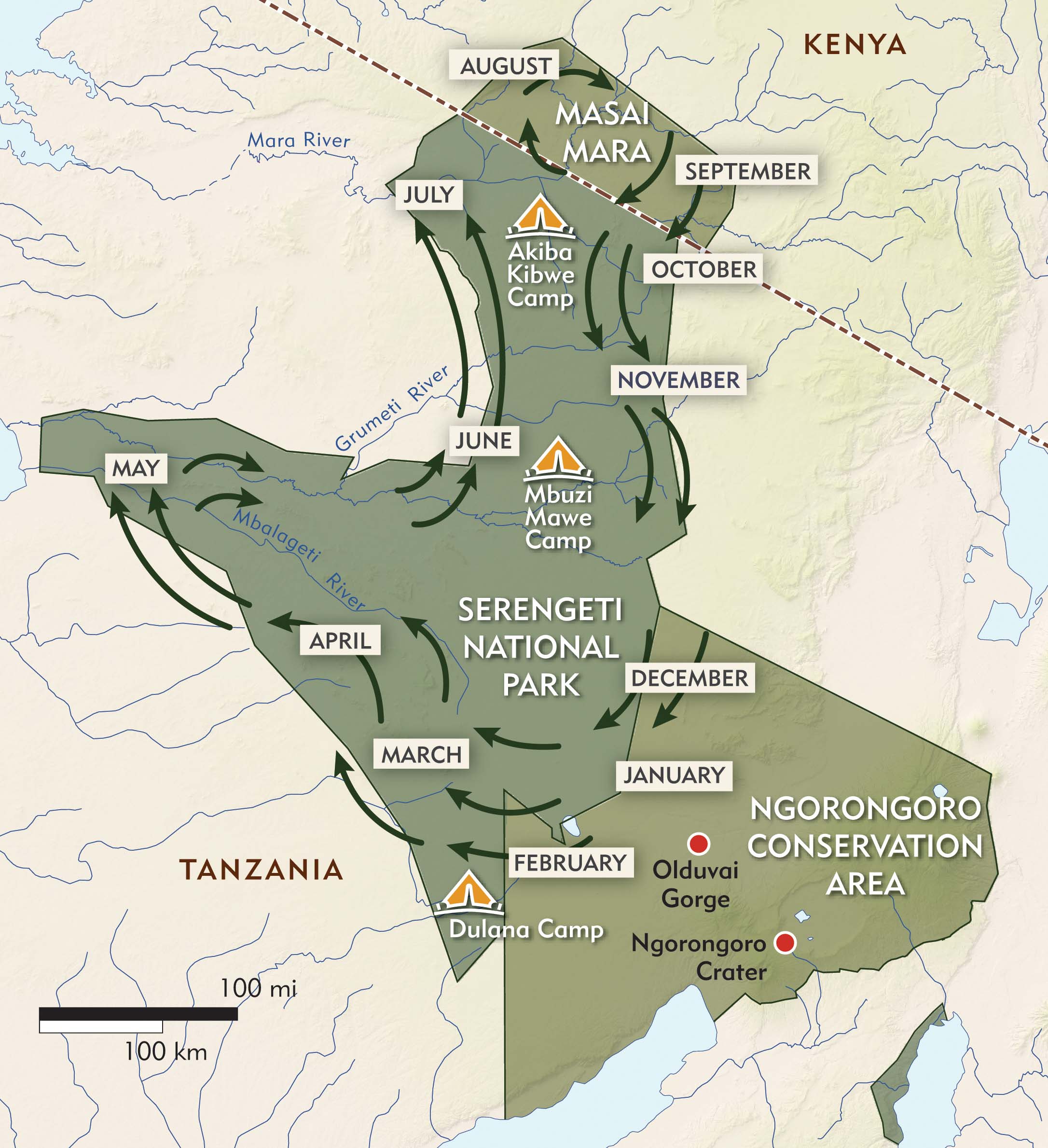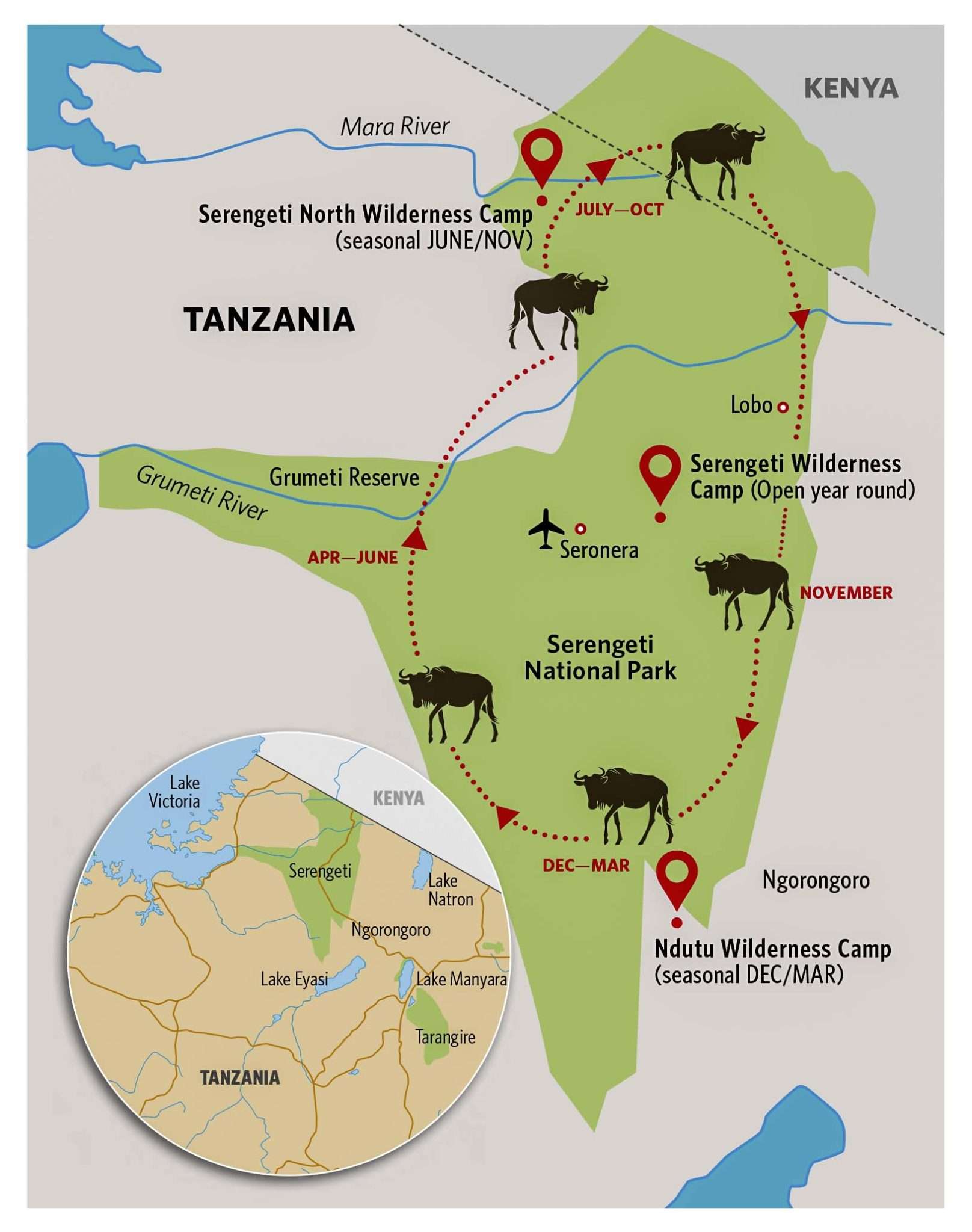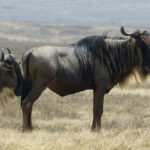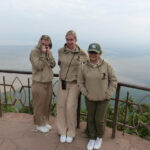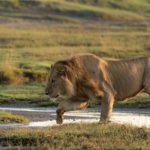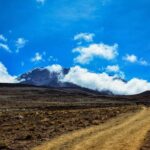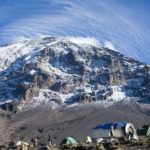Can you believe that over 1.5 million wildebeest, along with hundreds of thousands of zebras and antelopes, traverse the Serengeti and Maasai Mara ecosystems every year? This awe-inspiring journey, known as the Great Migration, is an unparalleled natural spectacle that captivates seasoned adventurers and wildlife enthusiasts alike. The raw, unfiltered display of nature at its finest, Tanzania’s Great Migration is a must-experience for experts in wildlife and conservation.
The Great Migration moves in a cyclical pattern, driven by seasonal rainfall and the constant search for fresh grazing fields. From July to October, the herds brave the perilous crossing of the Mara River, where crocodiles lie in wait for their next meal. This critical juncture provides one of the most dramatic and breathtaking views of the migration, drawing wildlife specialists from around the globe to witness these moments of raw survival. It’s not just about the spectacle but understanding the underlying ecological significance and the intricate balance of nature.

Overview of Tanzania’s Great Migration
Every year, millions of wildebeest, zebras, and gazelles embark on a monumental journey across Tanzania. This massive migration covers the Serengeti in Tanzania and the Maasai Mara in Kenya. Along the way, the animals face numerous dangers, including predators like lions and crocodiles. The migration is a critical event for the survival of these species. It ensures that they find new grazing areas and water sources.
This migration is not just vital for the animals; it’s also a huge draw for tourists. Witnessing the Great Migration is a bucket-list experience for many nature enthusiasts. The migration influences Tanzania’s tourism industry, bringing in visitors from all over the world. It’s a prime time for safari tours. Many tourists book their trips well in advance to catch a glimpse of this event.
Several factors influence the timing and path of the migration. Seasonal changes in weather play a significant role. The animals move in search of fresh grass and water, which are essential for their survival. The migration route is predictable but can vary slightly each year. This variability adds an element of unpredictability and excitement.
The Great Migration is more than just a natural spectacle; it’s also an intricate part of the ecosystem. It helps maintain the balance between predators and prey in the Serengeti. The movement of large herds enriches the soil and spreads plants’ seeds, promoting vegetation growth. This natural event has a lasting impact on the environment. Understanding its intricacies provides valuable insights into the delicate balance of nature.
The significance of the migration for Tanzania’s ecosystem and tourism
The Great Migration plays a critical role in maintaining the health of Tanzania’s ecosystem. As millions of animals move, they graze on different areas, preventing overgrowth and promoting new plant life. This constant movement enriches the soil with nutrients from the animals’ droppings. Additionally, their migration patterns help spread seeds across vast distances. This process aids in the growth of diverse plant species.
For the economy, the Great Migration is a major boost to Tanzania’s tourism sector. Tourists from around the globe flock to witness this awe-inspiring event. Safaris and guided tours are popular during migration season. This influx of visitors brings significant revenue to the country. Local communities benefit through job creation and cultural exchange.
The predators’ hunting activities during the migration also have a significant impact on the ecosystem. They control the population of grazing animals, ensuring no single species dominates the landscape. This balance maintains a healthy variety of animal life. Predators like lions and cheetahs rely on the migration for their food supply. Therefore, the migration is essential for their survival too.
The Great Migration also sparks scientific interest and research opportunities. Researchers study animal behaviors, migration patterns, and the impacts on the ecosystem. This data helps in wildlife conservation efforts. It also provides insights into the effects of climate change on migration. Such studies are vital for developing strategies to protect these natural phenomena.
Best Times to Experience the Great Migration
The timing of the Great Migration is influenced by the annual cycle of rainfall. From January to March, the herds can be found in the southern Serengeti, where the birthing season takes place. This is an incredible time to see thousands of newborn calves. Predator activity is high during this period, making it an exciting spectacle. The landscape is lush and green, adding to the scenery’s beauty.
From July to October, the migration reaches its most dramatic phase. During these months, the herds cross the Mara River into Kenya. This river crossing is perilous and filled with danger, making it a prime time for tourists. Watching the wildebeest face the crocodile-infested waters is an unforgettable experience. This period is considered one of the best times to witness the Great Migration.
November and December mark the start of the short rains, encouraging the herds to move back south. The wildebeest and other animals travel through the central and eastern Serengeti. This period is less crowded with tourists, offering a more intimate safari experience. The rain rejuvenates the vegetation, creating a stunning landscape. It’s a great time for photography enthusiasts to capture unique moments.
Considering the above periods helps in planning a trip to witness the migration. Specific timings offer different experiences, each with its unique highlights. Here is a summary:
- January-March: Calving season in southern Serengeti
- July-October: River crossing into Maasai Mara
- November-December: Return to central and eastern Serengeti
Choosing the right time depends on what aspect of the migration you wish to witness.
Prime Locations to Observe the Wildlife Drama
One of the premier locations to witness the Great Migration is the Serengeti National Park in Tanzania. This vast park covers 14,763 square kilometers of diverse landscapes, making it an ideal habitat for the migrating herds. From December to May, the southern and central Serengeti are bustling with activity. Visitors can experience close encounters with large concentrations of wildebeest and zebra. The park offers various lodges and tented camps for a truly immersive safari experience.
The Maasai Mara National Reserve in Kenya is another top destination for migration enthusiasts. Famous for the dramatic river crossings, the Mara River becomes a focal point from July to October. Tourists in the Maasai Mara can witness the harrowing scenes as the animals brave the crocodile-infested waters. The open savannahs provide excellent visibility for spotting predators like lions and cheetahs. Many luxury camps here offer stunning views and exceptional service.
Grumeti Game Reserve, located in the western corridor of the Serengeti, is a less crowded yet spectacular spot. This private reserve offers unparalleled opportunities to witness the migration in a quieter setting. The Grumeti River is a vital water source for the wildlife on their journey. Visitors can enjoy game drives, walking safaris, and even hot air balloon rides. The exclusivity of the Grumeti ensures personalized and serene experiences.
For those looking for an off-the-beaten-path adventure, the Ngorongoro Conservation Area is an excellent choice. This UNESCO World Heritage site is unique due to its volcanic crater and diverse ecosystem. From May to June, the herds pass through this area, offering a mix of stunning landscapes and abundant wildlife. The Ngorongoro Crater itself is a haven for many species, including the Big Five. Visitors can stay at lodges perched on the crater’s rim, providing breathtaking views.
Lake Ndutu, in the Ngorongoro Conservation Area, is another prime location during the early months of the year. The area between Lake Ndutu and Lake Masek is where thousands of wildebeest give birth from January to March. It’s an incredible sight to see newborn calves take their first steps. The rich grasslands attract numerous predators, creating dramatic wildlife interactions. This period offers a more intimate and less crowded safari experience.
Key Takeaways
- The Great Migration occurs mainly from July to October and January to March.
- Key locations include Serengeti National Park, Maasai Mara, and Ngorongoro Conservation Area.
- River crossings are best viewed between July and October at the Mara River.
- Calving season takes place from January to March in southern Serengeti.
- Witnessing the migration can offer unique wildlife sightings and research opportunities.
